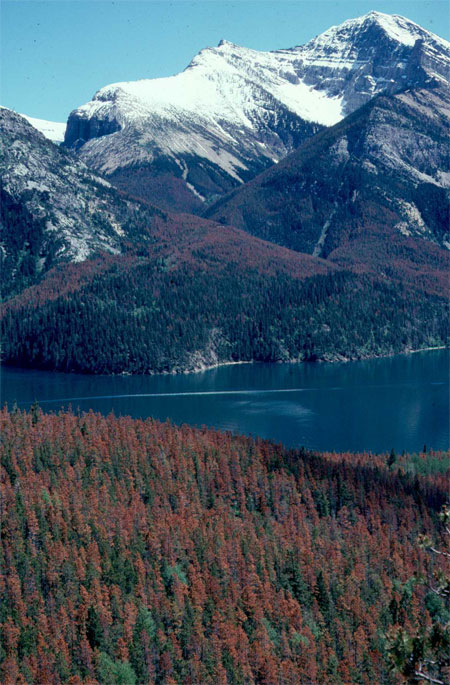It’s a blessing that our economy is more diversified than it was 30 years ago. There was a time when this current downturn in the forest industry would be considered a sign of a complete economic collapse in the province.
As healthy as our economy appears today, the forest industry is still at the core of community economies particularly in BC’s interior and the total sum of that industry still drives this provinces economic engine; even if that fact is overlooked by most of us.
As industry players walk a fine line between closures and acquisition we’re witnessing a chess game of sorts. With revenues dropping, each major licensee is gambling that it may be their turn to acquire their competitor at fire sale prices.
Provincial decision makers are in a game of hardball on this one; Forests Minister Rich Coleman’s coastal forest “action plan” came out just as industry players announced temporary or permanent mill closures across the province.
Coleman admits that there aren’t many mills left to protect on the north coast, and shipping raw logs to Asia will at least keep loggers employed in areas where jobs are hardest to come by.
Sources tell me that one of the coastal majors is beginning to move surplus milling and extraction equipment to China ready to set up shop there. I suppose it’s a common corporate philosophy today that if you can’t compete against them…join them.
The interior looks a bit more promising for Coleman since he’s dealing with more modernized operations, but still closures are happening, we now have Interfor buying a piece of Pope & Talbot, and joining the parade of companies cranking out pine beetle killed wood for markets that are sparse to say the least.
But even getting creative doesn’t appear to be working for Coleman, two huge 15-year forest tenures were awarded to Ainsworth Lumber in exchange for a promise to “construct or significantly expand” oriented strandboard (OSB) plants to convert the beetle-killed wood into building products.
Then just before the last provincial election there was the award of four 10-year harvest licenses to Swedish owned TallOil Canada Inc., to make wood pellets for export to Europe in an effort to consume beetle-killed wood.
The pellets would replace coal to generate electricity, reducing greenhouse gas emissions while generating hundreds of construction and logging jobs in the BC interior.
It seemed like problems were on the verge of disappearing, but it was all for not.
Ainsworth backed out of one of the two harvest licenses, and agreed to build only one OSB plant in the Prince George-Quesnel area by 2009.
But even that promise was short-lived as our dollar zoomed and the US housing market collapsed. Now Ainsworth has closed two OSB plants in Minnesota, one in Ontario and its newest OSB plant in Grande Prairie, Alberta.
Needless to say, there’s probably little hope for a new OSB plant in BC. I wonder what will happen to that other tenure license?
There’s still some hope for the pellet idea but the deadline for TallOil to have “substantial completion” of a pellet plant passed on November 1st and the ministry confirms that TallOil has asked for an extension on the forest licenses, but with no mention of a start date for constructing a pellet plant.
It appears as though the beetles have the best of us and especially the minister.
Now there’s a desperate attempt at creating power generation using the wood, and then planting fast growing genetically modified species so we can keep stoking the fires for those boilers long after the dead pine is gone.
Coleman might be going from being the architect of an economic disaster to an environmental disaster as a third of the province gets planted into some sort of strange plantation with stunted trees growing so close together that moose would need retractable antlers to survive in it.
Since 2005 the ministry has been subjected to the influence of political strategists rather than forest strategists. Desperate measures require competent solutions, not solutions from spin-doctors searching for feel good announcements that keep the public in an artificial comfort zone.
But really it’s not his fault, timing is everything in politics, and for Rich Coleman it’s just bad timing.
External market conditions, pine beetle epidemic, an increasing dollar, should the government be let off easy on this one?
Not a chance.
It’s times like these where strong leadership is required that doesn’t sell the farm. There’s more that could be lost if we’re not careful. The last time this happened the provincial government allowed big companies to close sawmills in communities but yet keep their tenure. This time they might allow companies to move off shore and keep their tenure.
Premier Campbell should put someone in charge of the ministry who has a forestry background and who understands communities that depend on forestry so that common sense can prevail during the storm.
(30)


